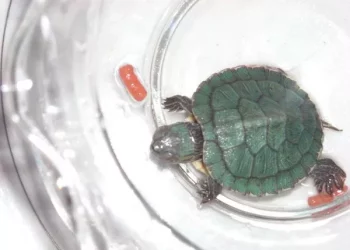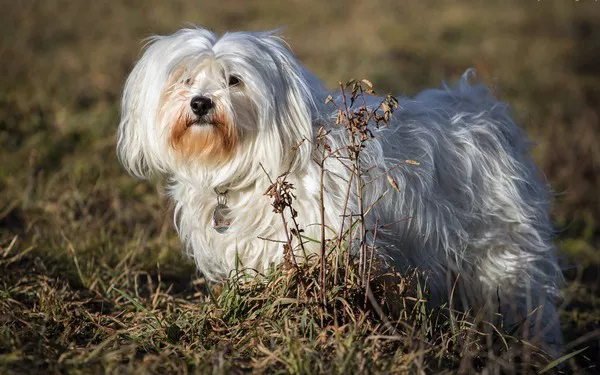Aldabra tortoises, with their impressive size and longevity, are among the most fascinating reptiles in the animal kingdom. Native to the Aldabra Atoll in the Seychelles, these tortoises are often studied for their unique adaptations and behaviors. One intriguing question that arises is whether these giant tortoises dig. In this article, we will explore the digging behavior of Aldabra tortoises, examining why and how they dig, the benefits of this behavior, and its implications for their well-being.
Understanding Aldabra Tortoises
Introduction to Aldabra Tortoises
Aldabra tortoises (Aldabrachelys gigantea) are one of the largest tortoise species in the world. They are native to the Aldabra Atoll, a remote coral atoll in the Indian Ocean. These tortoises can live for over 100 years and grow up to 4 feet in length and 600 pounds in weight. Their robust size and unique ecological niche make them a subject of great interest to researchers and conservationists alike.
Physical Characteristics
Aldabra tortoises have a distinctive appearance, characterized by a high-domed shell and sturdy, elephant-like legs. Their shell, or carapace, is designed to protect them from predators and environmental hazards. The tortoises’ large, curved beaks are adapted for grazing on vegetation, which forms the primary component of their diet.
Habitat and Lifestyle
The Aldabra Atoll, their natural habitat, is a low-lying coral island with a variety of habitats including grasslands, mangroves, and scrublands. This environment provides the tortoises with ample grazing opportunities and a range of microhabitats. The atoll’s climate is tropical, with a seasonal rainfall pattern that affects the availability of food and water.
Digging Behavior in Tortoises
Basic Digging Behavior
Digging is a common behavior among many tortoise species. It serves various purposes, from finding food to creating burrows for shelter. However, not all tortoises dig in the same way or for the same reasons.
Aldabra Tortoises and Digging
For Aldabra tortoises, digging is less about creating complex burrows and more about accessing resources or modifying their environment. Unlike some smaller tortoise species that dig extensive burrows, Aldabra tortoises’ digging is generally more superficial.
Reasons for Digging
Searching for Food: Aldabra tortoises might dig to uncover buried vegetation or roots. This is particularly useful during dry periods when food resources are less accessible.
Temperature Regulation: Digging can help tortoises regulate their body temperature. By burrowing into the ground, they can access cooler soil during hot weather or warmer soil during cooler periods.
Creating Shelter: While Aldabra tortoises do not typically dig extensive burrows, they may create small depressions or find natural shelters to rest or hide from the sun.
Observations and Studies on Digging
Research Findings
Studies on Aldabra tortoises have shown that their digging behavior is less pronounced compared to other species such as the Galápagos tortoises. Research conducted in natural and controlled environments indicates that while Aldabra tortoises do dig, their activities are relatively minimal and often related to environmental adjustments rather than extensive burrowing.
Case Studies
Observations from various research projects have provided insights into the specific digging behaviors of Aldabra tortoises. For example, studies in captive settings have shown that Aldabra tortoises may dig more frequently when housed in environments that lack natural substrates. These observations suggest that digging can be a response to environmental enrichment needs.
Experimental Observations
Experiments involving Aldabra tortoises in controlled settings have demonstrated that providing them with varied substrates can influence their digging behavior. For instance, adding loose soil or sand to their enclosures often encourages more digging, suggesting that this behavior is partially influenced by their immediate environment.
The Role of Digging in Conservation
Habitat Restoration
In conservation efforts, understanding the natural behaviors of Aldabra tortoises, including digging, is crucial. Digging can play a role in habitat restoration by aiding in soil aeration and seed dispersal. As tortoises move through their environment, their digging activities can help maintain the ecological balance of their habitats.
Enclosure Design
For captive tortoises, designing enclosures that mimic natural conditions is important. Providing substrates that allow for natural digging behaviors can improve the well-being of the tortoises. This includes using soil, sand, and other materials that encourage natural behaviors and support their physical and mental health.
Enrichment and Welfare
In captivity, environmental enrichment is essential for the overall welfare of Aldabra tortoises. Digging is one of many behaviors that can be encouraged through enrichment strategies. Enclosures that offer varied textures and substrates can help stimulate natural behaviors and promote a healthier, more active lifestyle for captive tortoises.
The Impact of Digging on Tortoise Health
Physical Health Benefits
Digging can have several physical health benefits for Aldabra tortoises. It helps in maintaining their claws and beaks, which are essential for their daily activities. Additionally, the physical activity involved in digging contributes to their overall fitness and well-being.
See Also: Can Aldabra Tortoises Eat Spinach?
Mental Stimulation
Engaging in digging activities provides mental stimulation for tortoises. In the wild, tortoises face a range of environmental challenges that require problem-solving and adaptability. In captivity, providing opportunities for digging and other natural behaviors helps prevent boredom and stress, which can lead to better overall health.
Addressing Issues in Captivity
Captive tortoises that do not have access to suitable substrates or enrichment opportunities may exhibit signs of stress or behavioral issues. Ensuring that their environment includes features that support their natural behaviors, including digging, can help mitigate these issues and promote a more balanced and healthy life.
Comparing Aldabra Tortoises to Other Tortoise Species
Galápagos Tortoises
In contrast to Aldabra tortoises, Galápagos tortoises are known for their more extensive burrowing behavior. These tortoises often dig deep burrows to escape extreme weather conditions or to find food. Their burrowing behavior is an adaptation to their environment, which varies significantly from that of the Aldabra Atoll.
Desert Tortoises
Desert tortoises, such as those found in North America, exhibit pronounced digging behavior as well. They dig burrows to escape the harsh desert heat and to find moisture. Their burrows can be quite extensive, providing critical refuge from extreme temperatures and predators.
Comparative Analysis
Comparing Aldabra tortoises to other species highlights the diversity in tortoise behavior and adaptations. While Aldabra tortoises do dig, their behavior is less about creating extensive shelters and more about environmental adjustments. Understanding these differences is important for designing appropriate conservation and care strategies for each species.
Conclusion
In conclusion, while Aldabra tortoises do exhibit digging behavior, it is generally less pronounced compared to other tortoise species. Their digging is primarily related to environmental adjustments, such as finding food, regulating temperature, and creating basic shelters. Understanding these behaviors is crucial for effective conservation and care practices, both in the wild and in captivity.
The study of Aldabra tortoises and their digging behaviors provides valuable insights into their natural history and ecological role. It also underscores the importance of designing appropriate habitats and enrichment strategies to support their well-being. As research continues, it will be essential to explore further variations in digging behavior and its implications for conservation and animal welfare.
By delving into the world of Aldabra tortoises and their digging habits, we gain a deeper appreciation for these magnificent reptiles and the complex interplay between their behavior and environment.
Related Topics:

























